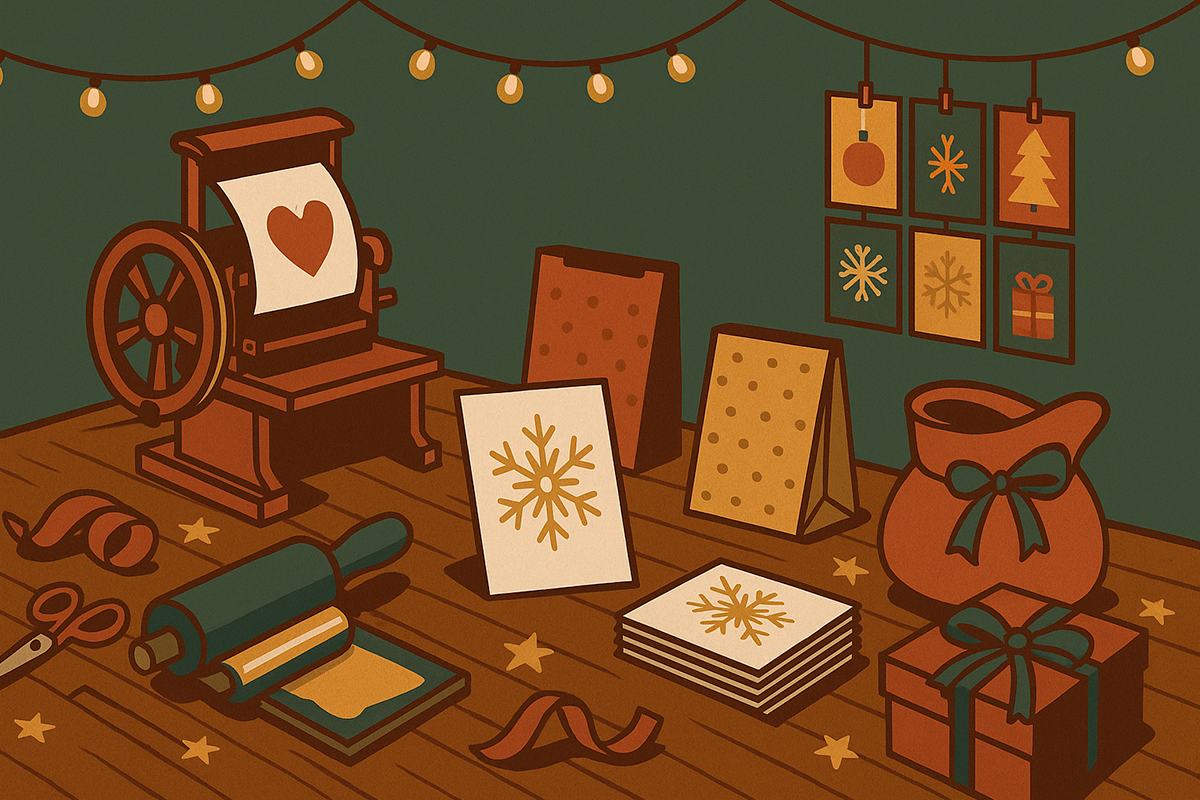Selecting the Right Binding Options for Your Publication
Learn how to choose the perfect binding for your publication. Explore options, considerations, and tips to ensure your project is durable and visually appealing!

Choosing your publication’s binding is a balancing act. Aesthetics, practical considerations, and costs need to be weighed before the best selection can be made. Of course, working with an industry-leading printer will help ensure you use the right binding, every time. But to help you understand your different options and how they impact aspects like durability and appearance, let’s explore them a bit more.
Overview of Publication Binding Options
In order to scale to meet production needs, all professional publication binding options share a few common traits. These include:
- Efficiency – They can be completed quickly and automatically with minimal manual interference.
- Strength – They need to be able to hold up to repeated wear as the publication is read, folded, pressed, etc. by readers.
- Aesthetics – They need to provide a clean, finished look to the publication.
However, these traits aren’t shared equally between all options. To understand which binding is right for you, it’s important to consider their specific pros and cons.
Saddle Stitching: Best for smaller booklets and brochures.
Saddle stitching involves folding all pages in half as a single bundle (this bundle of folded pages is called a signature) and stapling along the fold.
Thanks to its simplicity, saddle stitching is the most cost-effective form of publication binding. Saddle stitched publications also lay flat when opened, which can be a better reader experience. However, saddle stitch binding only works for shorter publications. Typically, no more than 64 pages are recommended, though it can be possible to push this method farther with thinner paper.
Perfect Binding: Ideal for thicker publications like catalogs and magazines.
Perfect binding involves assembling pages into multiple signatures and stacking them up. The folded edges are then trimmed, and an adhesive is applied. Finally, the cover is aligned over the adhesive, securing all pages in place.
This method creates a flat spine, which allows the title of the publication to be visible when it’s on a shelf. Perfect binding can also accommodate hundreds of pages easily. As for costs, perfect binding is a mid-tier option. It’s more expensive and time consuming than saddle stitching, but more affordable than case/hardcover binding.
Spiral Binding and Wire-O Binding: Suitable for workbooks and manuals.
To spiral bind a publication, all the pages are aligned and then punched along the binding edge. The punch leaves a series of holes that the metal or plastic spiral is then wound through, securing all the pages together.
This method works well for publications that are regularly handled or written in. The pages lay perfectly flat, and half the publication can be folded behind itself at any page. It also suits publications with large page counts, thinks to its strength. However, coil binding tends to be more expensive than either saddle stitch or perfect binding.
Case Binding (Hardcover): A premium option for books and high-end publications.
Case bound publications are first assembled into a series of signatures. These signatures are then sewn together. Finally, glue is used to attach the hard cover to the spine. The cover is typically made from a rigid paperboard and covered with a dust jacket.
Case binding is widely considered the most durable form of publication binding. It imparts a sense of value to readers. However, these advantages come at a much higher cost compared to other binding methods.
Factors to Consider When Choosing Binding
There are a multitude of factors that can impact your binding choice. Cost and appearance are usually the first that come to mind, and they’re fairly self-explanatory. But here are a few considerations that you may have missed.
Type of publication (ex. Books, magazines etc)
Readers have certain expectations for different publications, and deviating from the standard may be confusing or even off putting. A hardcover magazine looks out of place, while a saddle stitched coffee table book risks looking cheap. If your publication has a well-established binding method, it’s generally wise to stick with it unless you have concrete reasons to diverge.
Expected usage and handling.
A publication can’t just look good fresh off the press. It needs to continue looking (and functioning) well once it’s in the reader’s hands. Consider aspects of the final product’s lifespan, such as:
- Where will it live? On a shelf? Tucked in a bag?
- When will it be used? At work during meetings? On the beach during vacation?
- Why will people pick it up? Will it be mailed to them? Does it need to catch their eye at the store?
- What will it be exposed to? Will it be sent on its own through the mail? Does it have to hold up to being used outdoors?
Thinking about the entire lifespan of your publication will help you choose a binding that suits the expected wear and tear.
Explore More on Publication Printing
Interested in more about publication printing? Discover the full scope of the printing process in “Understanding the Publication Printing Process” and explore the basics in “What is Publication Printing?”
The Binding Process at Wallace Carlson Printing
At Wallace Carlson, we offer a wide range of binding options to suit your publication printing needs—whether it’s custom booklets, magazines, or anything in between. Our team will guide you in selecting the perfect binding method that fits both your budget and project requirements. We’ll also help you creatively integrate your branding, colors, and logos into the binding’s design, ensuring a cohesive and professional look.
Get in touch with us today to bring your publication to life!
Conclusion
Work that stands out across time and industries
Looking for more insights on print marketing and design? Check out the latest blogs from Wallace Carlson for expert tips, industry trends, and strategies to elevate your brand.



